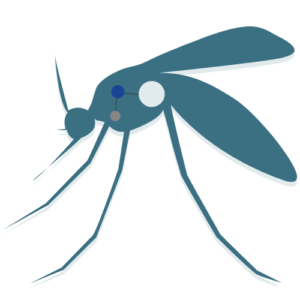Dengue (DEN) and Chikungunya (CHIK), exotic pathogens transmitted by invasive vectors
Dengue (DEN)
Dengue virus (DENV), belonging to the Flavivirus genus, is the arbovirus with the broadest impact on human health. Although its dispersal is partially conditioned by environmental constraints that limit the distribution of its main vectors (Aedes genus). Aedes albopictus is a competent vector for DENV and is now established in numerous regions of Europe. Viremic travelers arriving in Europe from dengue-affected areas have caused local outbreaks and autochthonous cases. One of the first autochthonous transmissions was reported from France in September 2010, with new autochthonous cases reported yearly. Climate change, global change and international travel have impacted the transmission of a wide range of vector-borne diseases in Europe, including DENV in metropolitan France.
In summer 2022, with the resumption of travel to many dengue-endemic tropical regions and temperature conditions highly conducive to transmission, metropolitan France was affected with no less than 65 autochthonous cases (4.5 times more than in 2020, the year of the previous record), a greater number of outbreaks – 9 in 2022 compared to 6 in 2020 and between 0 and 3 between 2010 and 2019 -, outbreaks of larger size – in particular, one in the Alpes-Maritimes region with 34 cases -, and finally, a geographic extension of the areas concerned.

To address the needs of public health practitioners in prevention, surveillance, risk assessment, and vector control, MOOD has dedicated a case study to dengue. Its aim is to design and develop sustainable risk modeling and mapping tools to better understand and anticipate emergence risks related to exotic vector-borne diseases and the response activities.
Chikungunya (CHIK)
Chikungunya virus (CHIKV), is one of the most important arboviruses in the world. This vector-borne disease is transmitted to humans mainly by Aedes aegypti and Aedes albopictus mosquito species. In recent decades, CHIKV has greatly increased its geographical range throughout the globe and is considered an emerging public health threat. Factors such as globalization, trade, international travel and climate change are known to impact CHIKV expansion. In fact, since 2007 Chikungunya cases have been reported in Europe, since Aedes albopictus is now established in numerous regions on the continent.
As global temperatures are on the rise, like other arboviruses, CHIKV could become more frequent and its geographic range could expand. Thus, to improve readiness and better anticipate future CHIKV outbreaks in Europe, prevention measures must throw light on the CHIKV rising global transmission and its expanding spatial distribution among mosquito vectors. Hence, it is crucial to determine the locations and the timeliness of a potential outbreak.
To address this problem, MOOD has developed a case study for chikungunya virus. Our goal is to better determine the role of climate change in CHIKV occurrence in Europe and project future transmission zones taking into account climate change by creating an ecological suitability map to determine the viruses distribution trend and anticipate emergence risks in the identified regions.

